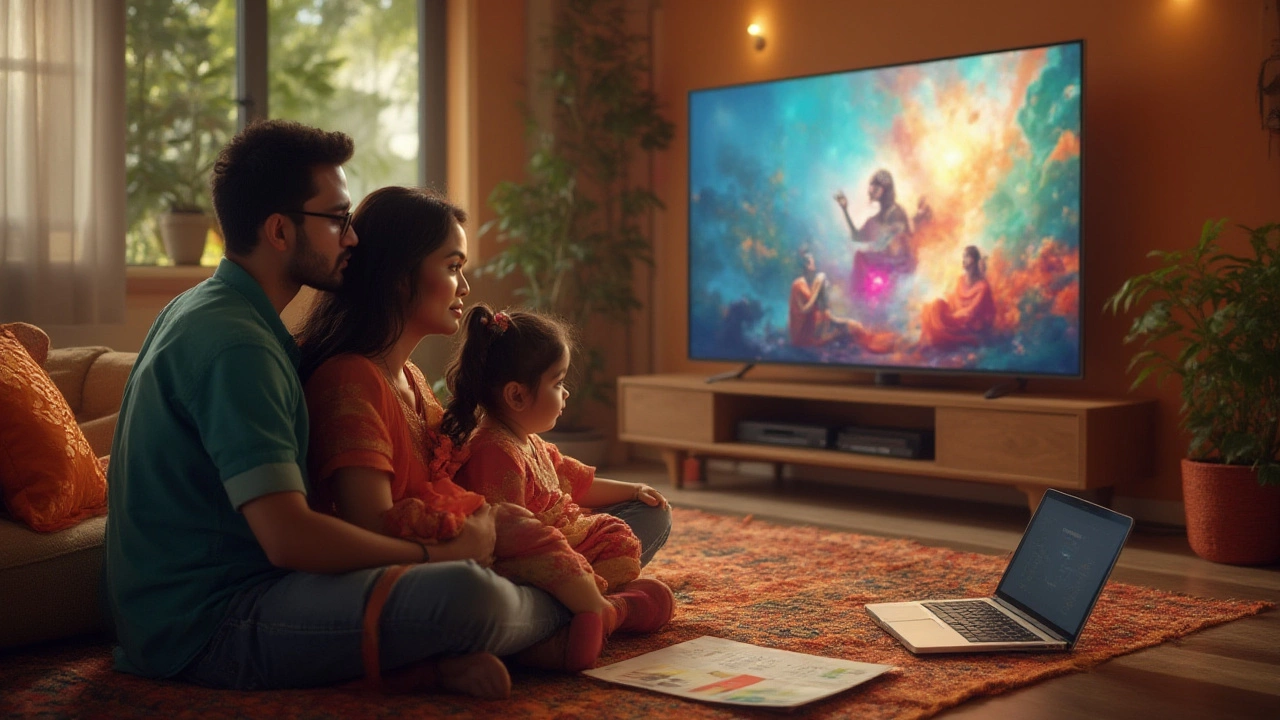
Ever had your TV die in the middle of a big match, or flicker out just as your favourite series hits its peak? It’s frustrating, right? Reliability is the holy grail when it comes to TVs. In a world where we binge, stream, and game for hours, it’s the trustworthy brands that make the difference between entertainment joy and utter rage. But when every manufacturer swears their TVs are ‘the best’, how do you really separate the solid from the suspect? Here’s what you actually need to know.
What Makes a TV Brand Reliable?
Reliability isn’t just about whether your set works out of the box. We’re talking long-term performance: a TV that still looks sharp, responds to your remote, and doesn’t leave ugly lines across the screen after years of use. Smart TVs added another layer—now there are software updates, streaming apps, and voice assistants to worry about. It’s a headache when they freeze up or become slow, so a reliable TV should excel at both hardware and software.
Let’s break it down into specifics. First, the panel quality matters. OLED and QLED panels have their perks, but some brands have mastered them better than others. If you fall for a cheap set, you might get dead pixels, poor brightness, or really noticeable colour fading after only a year or two. Look at the components too—things like HDMI ports, internal processors, and cooling fans. Skimping on these can mean early failure, annoying audio glitches, or lag when gaming. And let’s not forget remote controls, which are often the first thing to break on a budget TV.
Software support is another biggie. Some TVs come with regular over-the-air updates that keep things smooth, like Samsung’s Tizen or LG’s webOS. Lesser brands might launch with a bang but then abandon software fixes, turning your ‘smart’ TV dumb as apps stop working. Reliability also means security—yes, smart TVs can get hacked if left unpatched, something many people don’t even consider. Brands with a track record of providing timely updates win big here.
Of course, reliability should also mean good old-fashioned build quality. Sony and Panasonic, for example, use stricter quality controls than value brands flooding discount shops. Plus, these big names tend to have better customer support and warranties. You may pay a bit more upfront, but you get backup if something goes wrong. An overlooked fact: warranty length and support quality are part of reliability. If it breaks, you want help—not endless hold music.
So, a reliable TV brand nails hardware, software, updates, and support. They don’t cut corners, and they respond when things do go wrong. Now, who actually delivers all this in 2025?
The Most Reliable TV Brands: This Year’s Top Performers
Samsung is still booming in UK living rooms, and for good reason. Its QLED panels just don’t quit—the backlights hold up, and their smart TV software is regularly updated. In reliability surveys by Which? this year, Samsung scored a steady 91% for TVs still going strong at the five-year mark, outpacing almost all rivals.
LG has earned a cult following with its OLED range. Sure, OLEDs can suffer image retention if you watch static logos for days, but LG counters that with pixel-refresh features and solid warranties. Users are reporting upwards of 40,000 hours before any noticeable screen issues, which stacks up to more than a decade of daily use for most families. Plus, their webOS system rarely stalls or flakes out, so you get less of that ‘frozen app’ curse than on no-name brands.
Sony brings up the rear in a good way, thriving thanks to obsessive build quality. Their crystal-clear panels are matched by smooth Google TV integration. In a recent UK customer satisfaction poll from March 2025, Sony’s after-sales support took top spot—customers said it was easy to reach help and get parts, something rivals still struggle with. That counts when thinking long term, especially if a fault pops up past the standard warranty.
Let’s look at this data in a simple way. The table below compares key reliability stats—lifespan, support, and software update commitment—across the most popular brands in 2025:
| Brand | Avg. Lifespan | 5-Year Survival Rate | Update Frequency (per yr) | Customer Support |
|---|---|---|---|---|
| Samsung | 7-10 yrs | 91% | 3-4 | Very Good |
| LG | 8-11 yrs | 89% | 4 | Good |
| Sony | 8-12 yrs | 92% | 3 | Excellent |
| Panasonic | 7-10 yrs | 87% | 2-3 | Good |
| TCL | 6-8 yrs | 78% | 1-2 | Okay |
This table makes it obvious: most reliable tv brand contenders come down to Samsung, Sony, and LG. Many budget-friendly newcomers talk a good game, but when you check the real longevity stats, they lag behind. TCL and Hisense, for example, look tempting in shops, but you’ll see more complaints about flickering screens or unreliable sound after a couple years. The price gap narrows quickly when you factor in replacements or repairs.
But are there exceptions at the lower end? Sometimes. TCL’s high-end models are breaking the mould for value and reliability, especially if you stick to their QLED or mini-LED lineup. People report five years of use with barely a blip, provided the TV doesn’t get moved much or hammered by sunlight. Hisense has also improved, but patchy support and a higher fault rate keep it below the top three for now.

Longevity Hacks: How to Make Your TV Last Longer
You can buy the best TV in the shop, but if you abuse it—leaving it on pause for hours, cranking brightness to max, stuffing it in a steamy room—it’ll let you down. So, how do you stretch your TV’s lifespan, whoever made it?
- Ventilation is non-negotiable. TVs aren’t fans of heat build-up. Don’t wedge the set in a tiny alcove or stick something over the vents. Overheating is the silent killer of smart TVs.
- Moderate your brightness. Full brightness looks punchy, but it burns out the backlight quicker (even on QLEDs). Set it so it’s comfortable, not blinding. Auto-brightness features help here, but double-check your settings now and then.
- Update your software. Ignoring updates risks bugs building up, which can freeze your interface or even brick your TV. Set updates to run overnight, so your TV doesn’t install them right when you want to watch something.
- Avoid leaving static images on for ages, especially on OLEDs. If you love news channels or leave gaming HUDs on screen, use built-in screen savers, or cycle through content more often.
- Use a surge protector. Power spikes do more damage than most people realise. They fry circuit boards and processors—problems that are expensive (sometimes impossible) to fix.
- Keep the remote clean and free from gunk. Sticky buttons are often the first sign of wear, and replacing a remote is nowhere near as fun as buying a new game or streaming box.
- If you have kids or pets, invest in a wall mount or at least a sturdy TV stand. Broken screens from knocks and falls are not covered by most warranties.
Some TV manufacturers claim their sets last up to 100,000 hours, but real-world use is different. People binge series, play sweaty FIFA sessions, or just let YouTube run for background noise. With some basic care, the best TVs easily hit 8–10 years, as proven by recent surveys. That’s plenty of time before you start itching for the latest model.
One small but often overlooked tip: take a photo of your model number, and keep your receipt somewhere safe (or email it to yourself). When it’s time for repairs or warranty claims, you’ll thank yourself for not having to shift a 60-inch panel just to squint at the serial number.
Dealers sometimes push you to buy expensive ‘extended warranties’. These are only worth it if you’re clumsy, have playful pets, or just hate risk. For everyone else, top brands already offer solid manufacturer coverage, so check what’s included before you shell out extra.
What About Newcomers and Lesser-Known TV Brands?
The UK and Europe have been flooded with new TV brands, especially since smart TVs became the norm. You’ll see names like Toshiba, Philips, Blaupunkt, and even supermarket own-brands popping up in major retailers. The prices turn heads, but are you trading longevity for savings?
Here’s where it gets real: many budget models use older software, offer patchy app support, or simply don’t get future updates. A Philips Android TV may work a treat on day one, but after a couple of years, YouTube or Netflix apps might stop working if Philips pulls support. It’s a nightmare for anyone wanting hassle-free streaming.
Toshiba and Sharp have actually bounced back in the last year, offering decent models in the mid-range. These use proven hardware from established panels, but you can expect slower firmware updates compared to the big three. After-sales support is also a mixed bag—get a fault, and you might get bounced between the brand, the retailer, and a generic repair centre. You don’t see this as much with Sony, Samsung, or LG, who offer streamlined support.
There are some surprising success stories. Panasonic’s new ‘MX950’ OLED range is getting rave reviews for reliability and straightforward menus, winning over viewers who hate complicated interfaces. Meanwhile, some lesser-known brands like Metz and JVC offer good bargains for student flats or guest rooms—just don’t expect them to last a decade, or to survive constant heavy use.
Is it ever worth buying a budget set? If you just need a spare screen for the kitchen or kids’ playroom, these sets get the job done. But for your main TV, spend the extra for peace of mind. The money you save upfront can easily disappear in repairs, replacement remotes, or just plain frustration when Wi-Fi won’t connect anymore.
For anyone serious about streaming, gaming, or movie nights, stick to a trusted name. Go with a recent model that’s still getting updates, and check independent and consumer group ratings. Ask around too—word of mouth reveals a lot the spec sheets never mention. Your neighbour’s three-year-old Sony still running like new? There’s your answer.